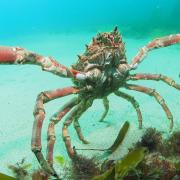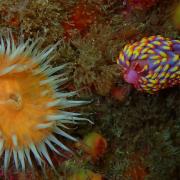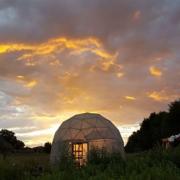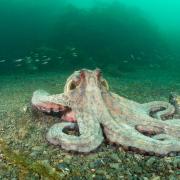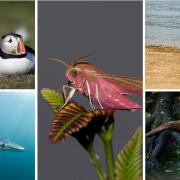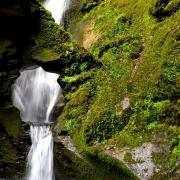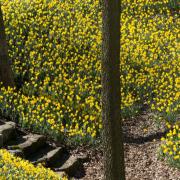Wildlife photographer David Chapman on what flora and fauna to see in August, and where to find one of the rarest plants on earth.
WHAT TO SEE

Chinese character moth
Did you know there are about 2,500 moth species in the UK, compared to only about 57 butterflies? Some moths are small and indistinct but many are large and colourful. My favourites are the ones that have developed a clever camouflage or mimicry such as the ‘Chinese character’ moth which looks just like a bird dropping!


Cornish heath
Cornish heath is a heather found only on The Lizard and more specifically only on serpentine rock, it grows nowhere else in the world. Good places to look include Windmill Farm, Kynance Cove and Goonhilly Downs (near the Earth Station). Tall and robust, this is a beautiful flower found in August and September.


Osprey
Ospreys don’t breed in Cornwall but each autumn they pass through the county on their way to Africa. In recent years their British breeding population has increased through reintroduction and greater protection so we now have a much higher chance of seeing one, in August and September. Any estuary, creek or lake can provide a temporary home.

WHERE TO GO

Windmill Farm, The Lizard
Windmill Farm is a nature reserve on The Lizard, so-named because at its centre there is an old windmill which has been converted into an observation tower. The reserve is jointly owned by Cornwall Wildlife Trust and Cornwall Bird Watching and Preservation Society; it is open to everyone free of charge and is a great place for wildlife.

In summer the many ponds are teeming with dragonflies and damselflies.

The rush pasture provides sanctuary for grasshoppers, crickets and butterflies whilst on the open heathland there are plenty of wildflowers including Cornish heath, bell heather, cross-leaved heath, great burnet and sneezewort.

The hedgerows provide a safe place for nesting birds and an evening visit might be rewarded by the sight of a barn owl. Watch out for lizards on the board walk and don’t be surprised to spot an adder, particularly beside the old runway near Predannack airfield.
For directions see www.cornwallwildlifetrust.org.uk/nature-reserves/windmill-farm

To see more of David’s photography see: www.davidchapman.org.uk and to learn more about wildlife in Cornwall look for David’s book Where to Watch Wildlife in Cornwall and the Isles of Scilly in local bookshops or direct from David.











